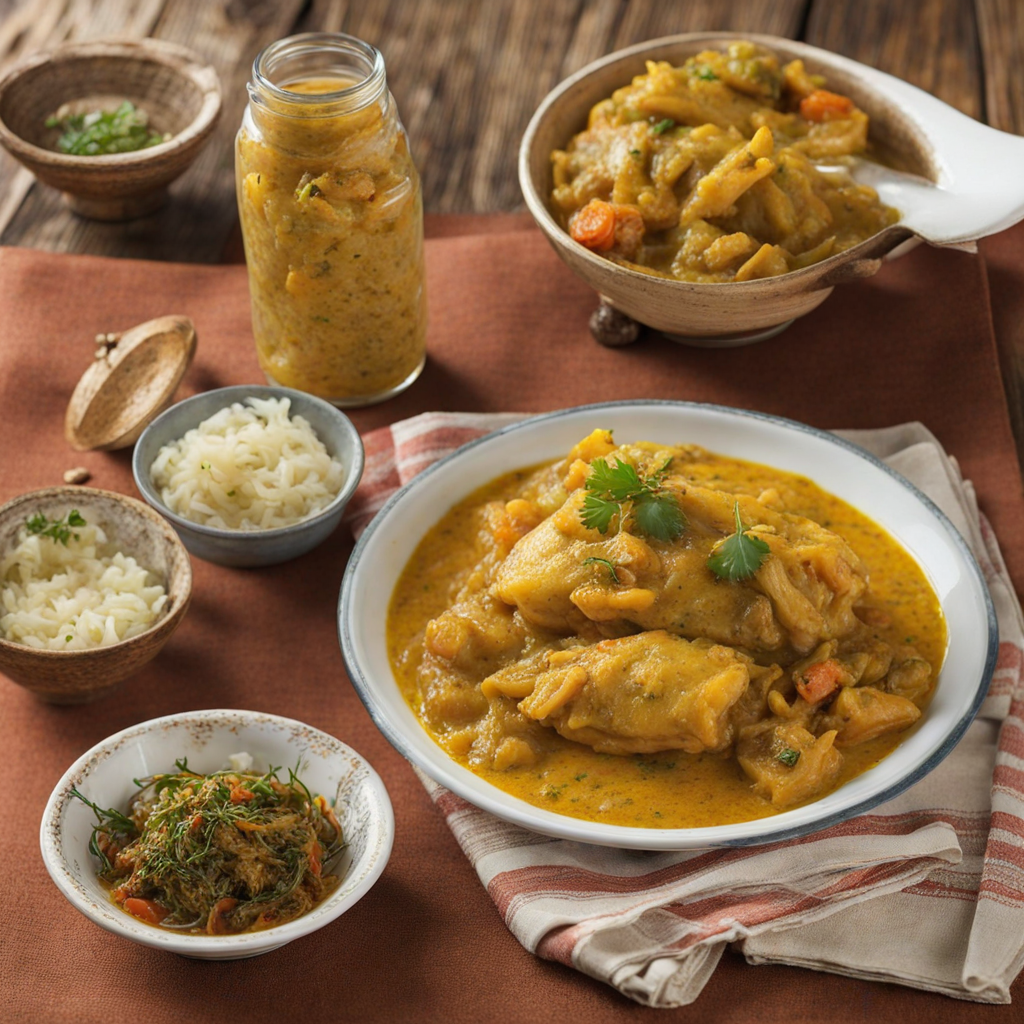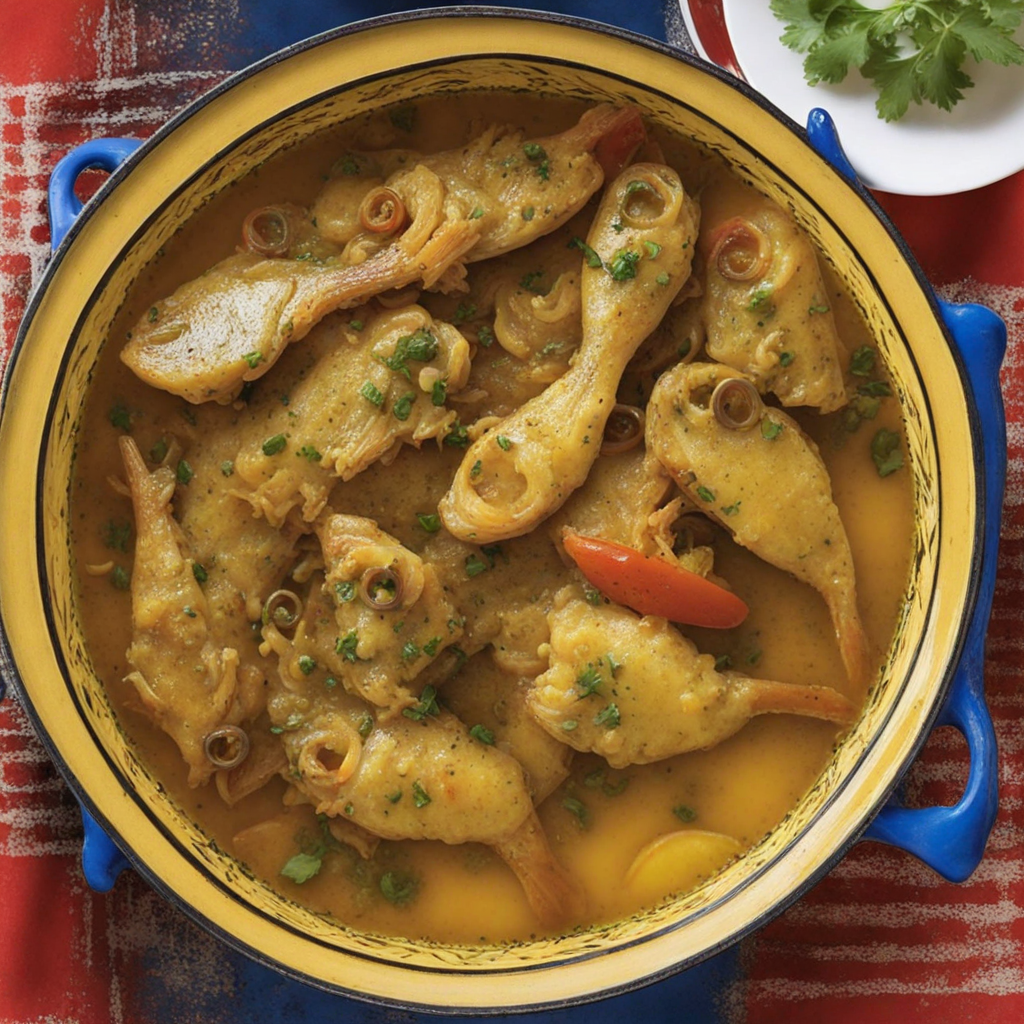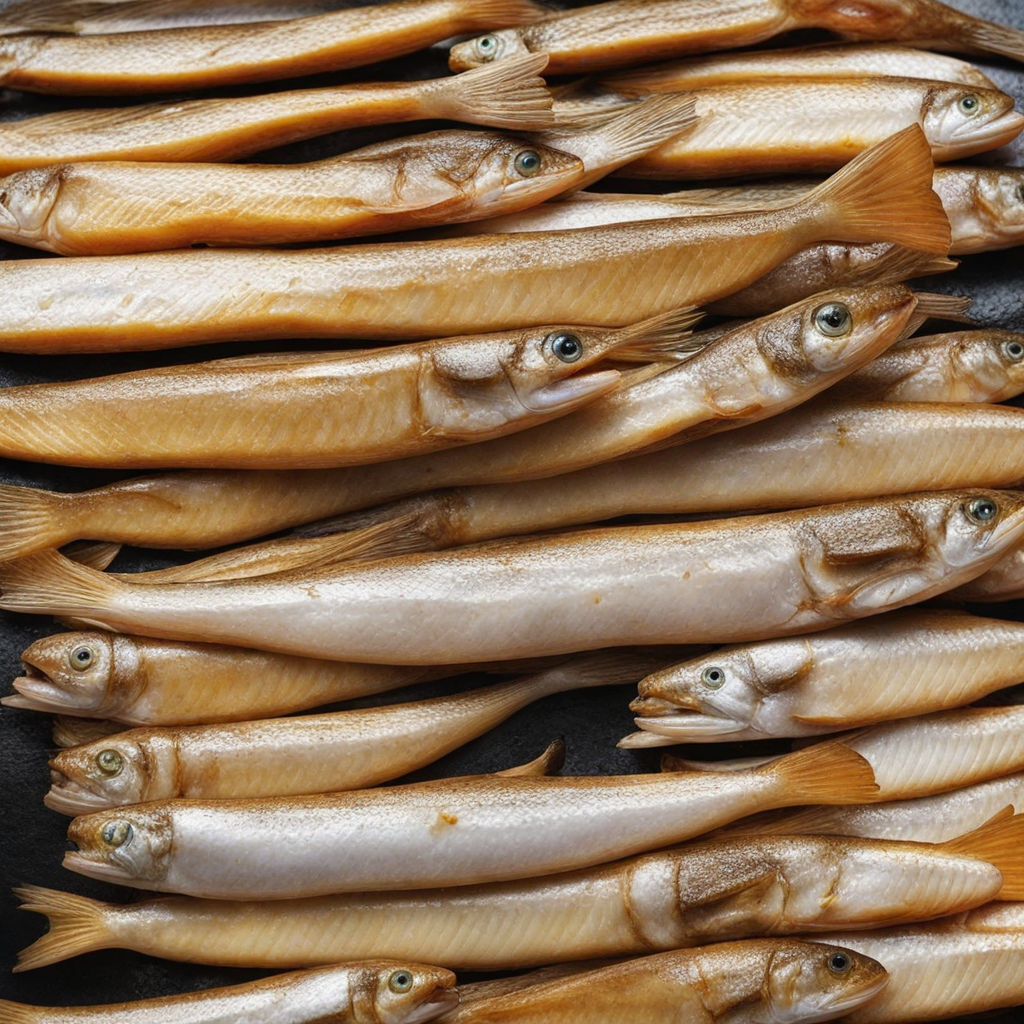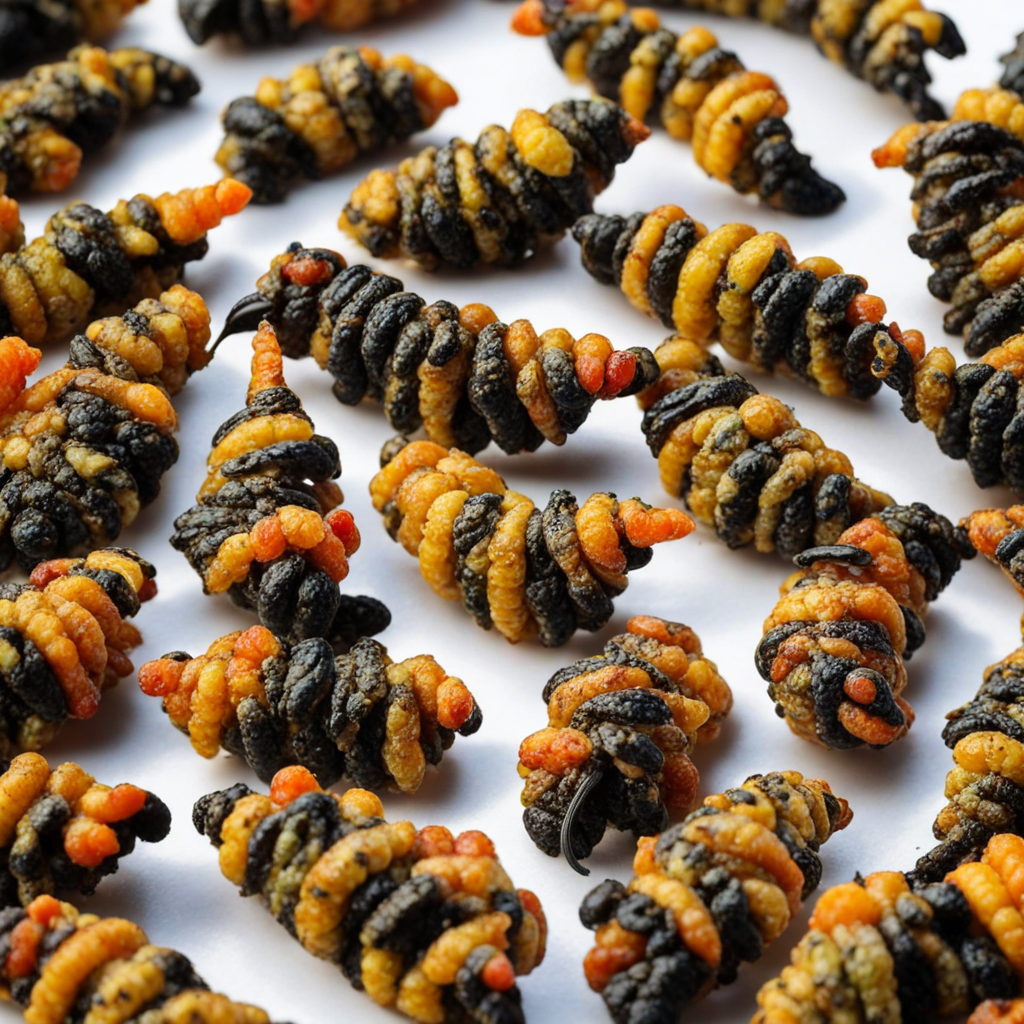Kaapse Kerrievis
Kaapse Kerrievis, or Cape Curry Fish, is a vibrant and aromatic dish hailing from South Africa's Cape Malay cuisine. This dish is a delightful combination of fresh fish, typically linefish such as snoek or yellowtail, marinated in a rich blend of spices that embodies the region's diverse cultural heritage. The curry is characterized by its warm golden hue, derived from turmeric, and is often balanced with the sweetness of onions, garlic, and ginger, creating a symphony of flavors that dance on the palate. The use of spices like cumin, coriander, and fenugreek adds depth, while a touch of chili provides just the right amount of heat, making each bite a thrilling experience. The preparation of Kaapse Kerrievis is as important as its ingredients. The fish is usually simmered gently in a sauce made from tomatoes, coconut milk, and a medley of spices, allowing the flavors to meld beautifully. This method ensures that the fish remains tender and succulent, soaking up the aromatic essence of the curry. Served traditionally with fluffy rice or roti, the dish is often accompanied by a side of tangy sambal or pickled vegetables, enhancing the overall taste and adding a refreshing contrast to the richness of the curry. Enjoying Kaapse Kerrievis is not just about the food; it's an invitation to experience South African culture and its warm hospitality. The dish is often prepared for family gatherings and celebrations, making it a symbol of togetherness. As you take your first bite, you'll discover not only the intricate layers of spices but also the heart and soul of a community that takes pride in its culinary heritage. This dish is a must-try for anyone looking to explore new and exciting flavors that reflect the melding of cultures in the beautiful landscapes of South Africa.
How It Became This Dish
The Culinary Journey of Kaapse Kerrievis: A South African Delight #### Origins Kaapse Kerrievis, a dish steeped in the rich tapestry of South African culinary history, hails from the vibrant Cape Malay community of Cape Town. This dish, translating to "Cape Curry Fish," reflects the multifaceted influences that have shaped South African cuisine, particularly during the colonial period. The Cape Malay people, descendants of slaves brought to South Africa from various parts of Southeast Asia, including Indonesia, Malaysia, and India, contributed significantly to the region's culinary landscape. The origins of curry in South Africa can be traced back to the early 17th century when the Dutch East India Company established a refreshment station at the Cape of Good Hope. The arrival of spices from Asia, coupled with the local ingredients available in the Cape, laid the foundation for the development of unique curry dishes. The Cape Malay community, with their rich heritage of spices and cooking techniques, began to create flavorful dishes that incorporated local fish, an abundant resource in the surrounding waters. #### Cultural Significance Kaapse Kerrievis is more than just a dish; it is a cultural emblem of the Cape Malay identity. The preparation and enjoyment of this dish often occur during family gatherings, religious celebrations, and community events. For many Cape Malays, it is a symbol of hospitality, embodying the warmth and generosity of their culture. The use of fish—often snoek or yellowtail, both plentiful in the region—reflects the community's close relationship with the sea and its resources. The dish is typically cooked with a blend of spices—cumin, coriander, turmeric, and chili—which not only add depth and warmth but also connect the dish to its Asian roots. The integration of spices mirrors the history of the Cape as a meeting point of diverse cultures, where the flavors of the East mingled with local ingredients to create something uniquely South African. #### Development Over Time As Cape Malay cuisine evolved, so did the preparation of Kaapse Kerrievis. Traditionally, the dish would be made with freshly caught fish, simmered in a fragrant curry sauce, often served with rice or traditional bread known as "roti." The cooking method would vary from family to family, reflecting personal tastes and regional variations. In the 19th and early 20th centuries, as the South African culinary scene expanded, Kaapse Kerrievis began to gain recognition beyond the Cape Malay community. The advent of tourism in Cape Town during the late 20th century brought international attention to the diverse culinary offerings of the region. Visitors were drawn not only to the natural beauty of the Cape but also to its rich food culture, leading to a revival and modernization of traditional dishes, including Kaapse Kerrievis. In contemporary South Africa, Kaapse Kerrievis has found its way onto the menus of both local eateries and upscale restaurants, often presented with a modern twist. Chefs experiment with different fish varieties, incorporate seasonal vegetables, and even play with the spice blends, making the dish accessible to a broader audience while preserving its essence. #### Modern Interpretations Today, Kaapse Kerrievis can be found in various forms across South Africa, with each chef adding their unique flair. Some contemporary interpretations feature a fusion of flavors, combining traditional Cape Malay spices with influences from other South African cuisines, such as the use of local produce and indigenous herbs. This evolution reflects the dynamic nature of South African cuisine, where culinary boundaries are continually redefined. Moreover, the dish has also adapted to the increasing awareness of sustainability in the culinary world. Many chefs are now emphasizing the importance of sourcing fish responsibly, ensuring that the ingredients used in Kaapse Kerrievis contribute positively to the health of marine ecosystems. This shift not only enhances the dish's appeal but also aligns with a growing global trend toward sustainable food practices. #### Conclusion Kaapse Kerrievis stands as a testament to the rich history and cultural significance of the Cape Malay community within South Africa. Its journey from a humble dish prepared in family kitchens to a celebrated culinary icon highlights the resilience and adaptability of South African cuisine. As it continues to evolve, Kaapse Kerrievis remains a beloved staple that connects generations, encapsulating the flavors, stories, and traditions of the Cape Malay heritage. Whether enjoyed at a bustling local market, a family gathering, or a high-end restaurant, Kaapse Kerrievis is much more than just a meal; it is a celebration of identity, community, and the enduring spirit of South Africa. As the world becomes increasingly interconnected, the dish serves as a delicious reminder of the power of food to bridge cultures and foster understanding—one flavorful bite at a time.
You may like
Discover local flavors from South Africa







